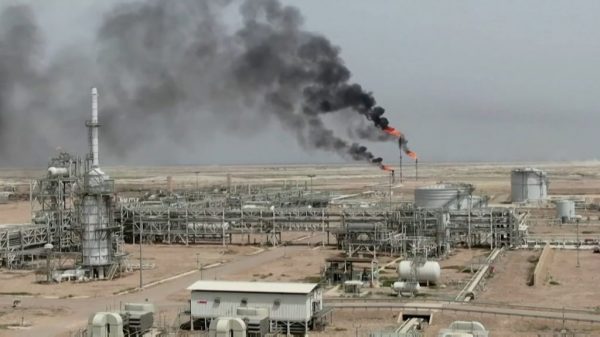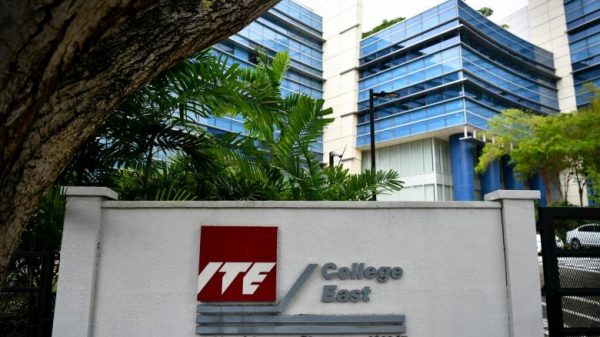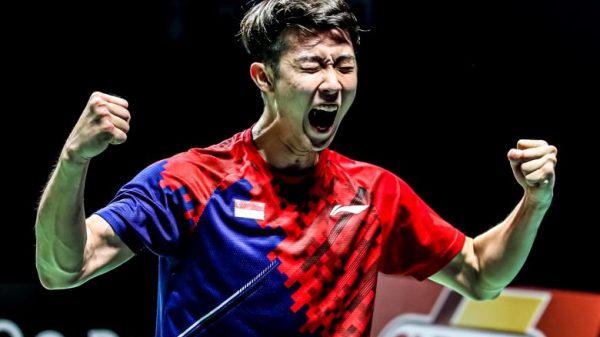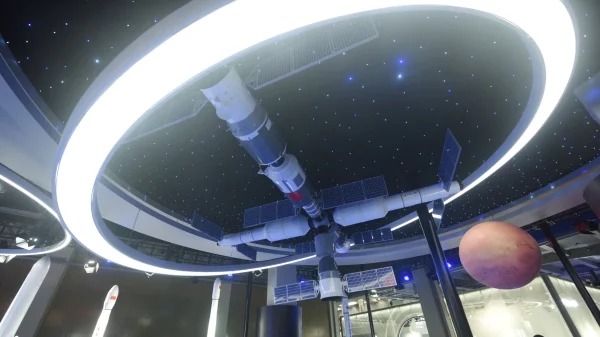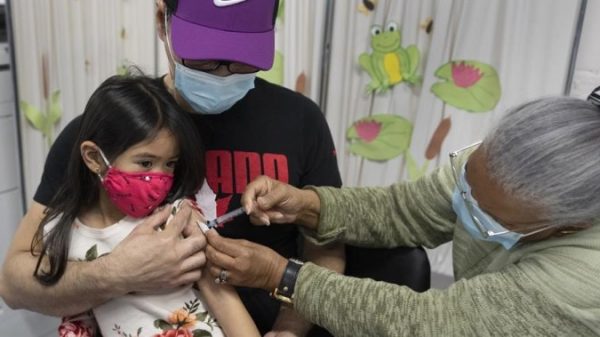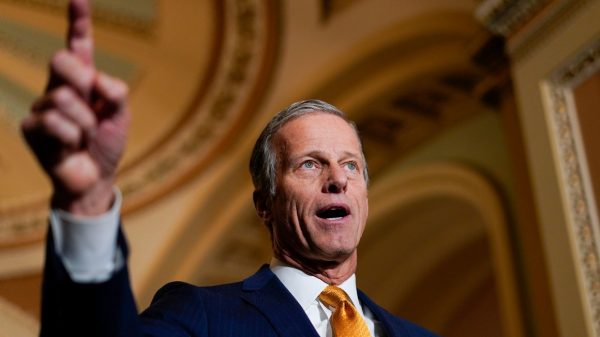
The U.S. had bet big on Novavax. In July 2020, the Trump administration announced it would invest $1.6 billion over time to help the company build up its manufacturing and deliver 100 million doses by the end of 2020 — more than any other investment in a Covid-19 vaccine maker up to that time. Unlike the other vaccines commissioned by the federal government, such as new messenger RNA technology used by Pfizer and Moderna, officials believed the Novavax shot could help not only the U.S., but the farthest reaches of the world. The vaccine did not require freezer storage and thus would be easier to ship to countries in Africa, the Middle East and Asia.
But the quality and manufacturing problems Novavax faced appeared to be significant. A select group of officials working with the Trump administration’s Operation Warp Speed on scaling U.S. manufacturing pressed the leader of their team, Moncef Slaoui, to reconsider whether to support the company. They wanted the administration to focus instead on helping to build capacity at other companies that had more experience. But Slaoui, along with other Covid-19 vaccine officials, was adamant Novavax would deliver. Slaoui, the former scientific director of Covid-19 vaccine development efforts at Operation Warp Speed, confirmed his steadfast support for Novavax in an interview with POLITICO.
“The reason we selected Novavax is because it had accumulated significant experience in … making a recombinant protein vaccine against a virus that has a lot of similarities to Covid-19 virus,” Slaoui said, referring to the company’s ongoing efforts to develop a flu vaccine. “We knew that recombinant protein was going to be less fast than the other technologies because you have to make the protein in the appropriate structure. And it’s very complex to do.”
Operation Warp Speed officials believed that the mRNA vaccines being produced by Pfizer and Moderna could come more quickly, providing protection to U.S. citizens in controlled settings where the need for freezers could be accommodated, and then Novavax could provide an easier-to-handle vaccine to export to other countries. With that in mind, Operation Warp Speed continued to fund and support Novavax’s manufacturing over the next six months with the encouragement of top Trump officials from multiple agencies — despite clear warnings that the company had yet to solve core problems, according to five of the people who spoke to POLITICO for this story, including two former officials.
Novavax during that same period pursued deals with multiple countries and international organizations, including the Serum Institute of India and the World Health Organization, to begin distributing its vaccine across the world by the end of 2021. Novavax has pledged 1.35 billion doses to the world, along with the 100 million it promised the U.S.
Yet in the year since then, it’s failed to successfully deliver a single dose — leaving the world’s neediest countries in limbo as it tries to convince regulators it can consistently produce a high-quality shot.
The delays have posed a serious challenge to American and international officials’ plans to vaccinate the world. With at least five billion doses still needed to meet global demand, the Biden administration has sought new ways to plug the gap in the coming year.
Pfizer is now expected to supply an additional 1 billion doses to lower and middle-income countries. But Moderna has so far balked at expanding production to aid the rest of the world. AstraZeneca’s vaccine is still not approved for use in the U.S. and the Biden administration has yet to release millions of Johnson & Johnson and AstraZeneca shots that are going unused in this country.
On Wednesday, Novavax announced that it had completed its filing for emergency use authorization in the United Kingdom, though it is still unclear whether the country’s regulatory body has formally accepted the submission — a signal that would show it believes the company’s filing is complete and ready for review.
Britain’s regulatory body “has acknowledged receipt of the application that we submitted electronically,” Alison Chartan, a spokesperson for Novavax, told POLITICO in an email.
The company has said publicly that it plans on finishing its filings for Europe, Canada, Australia and New Zealand, and has submitted applications with the World Health Organization and India, where its massive manufacturing partner Serum Institute is based.
“You don’t file for emergency use approval if you haven’t solved all of your manufacturing issues. So we feel that the filing today, and the other regulatory agencies this week, should largely put to bed any of those concerns,” Novavax CEO Stanley Erck told Yahoo! Finance on Wednesday.
Still, Novavax faces significant roadblocks in the U.S., where it has said it plans to submit an application for emergency use authorization by the end of the year. As of earlier this month, the company had not been able to prove to the Food and Drug Administration that it can consistently produce a shot that meets the agency’s standards and that its tests can successfully determine the vaccine’s purity levels, according to the three people with direct knowledge of the company’s interactions.
In a previous statement to POLITICO, Novavax Senior Vice President of Investor Relations and Corporate Affairs Silvia Taylor said the company’s analytical testing methods had been “validated” — but did not answer questions about whether the FDA had signed off on them.
“The vaccine development and regulatory submission processes are highly complex and often require years to advance to the point where we are now. We will fulfill all of our committed doses both in the U.S. and globally,” Taylor told POLITICO.
Novavax declined to respond to a series of questions for this article. The White House and the Department of Health and Human Services did not respond to requests for comment.
Whatever the FDA, viewed internationally as the gold standard, decides about Novavax’s manufacturing quality control and analytics could have an impact on its ability to produce doses for Americans and potentially for other countries across the world.
Meanwhile, the global vaccination campaign is falling further behind schedule. When the World Health Organization and several international groups formed COVAX last April, it aimed to serve as a powerful advocate for dozens of low-income countries that were wracked by Covid-19 yet lacked the resources to quickly develop their own vaccines or compete for scarce doses. Instead, it has struggled to secure the commitments from richer countries needed to quickly vaccinate the world. In nations like India, export bans have kept hundreds of millions of promised Covid-19 doses from reaching COVAX.
That makes the wait for Novavax all the more urgent.
“One of the virtues of this technology conceivably would be that you could produce this on a very large scale … places that could conceivably make billions of doses a year,” said Robert Kadlec, the Trump administration’s assistant health secretary for preparedness and response. “The real issue here is in light of the global need, which to me is very immediate and urgent … if you can get this Novavax thing to work, it certainly would potentially be able to utilize a very large capacity that exists globally that could meet the demands.”
The company in February pledged 1.1 billion doses to COVAX, though multiple people with knowledge of the matter said they do not expect the company to be ready to ship the majority of those doses until the end of 2022. As of September, the Kaiser Family Foundation calculated that just 2 percent of people across low-income countries and 30 percent of those in lower middle-income countries were at least partially vaccinated. Among high-income nations, that figure was 65 percent.
“By exclusive reliance on new technologies and innovation, we left the whole southern hemisphere bereft of a vaccine,” concluded Peter Hotez, a vaccine expert at the Baylor College of Medicine in Houston. “Everybody focused on innovation and speed to the clinic without due consideration of, do we have a vaccine that we can actually make for nine billion people?”
Early Warnings
By the spring of 2020, the U.S. was still in the early stages of the pandemic. More than 5 million people had been diagnosed with Covid-19 and 100,000 had died as of the end of May. The country was still experiencing massive upticks in cases as superspreader events led to increased transmission of the virus. With more surges likely on the horizon, senior officials working on Operation Warp Speed were scrambling for a breakthrough that would spare the world the agonies of disease and death, and the economic devastation of repeated lockdowns.
Slaoui tapped Matt Hepburn, a former Department of Defense official and an epidemiology specialist, to oversee the vaccine development process.
Led by Hepburn and Slaoui, Operation Warp Speed fixated on three different options — a vaccine that relied on messenger RNA, an unproven but quickly produced technology that required the U.S. to stand up new manufacturing lines; a vaccine that relied on a biological process of altered viruses that had been used for decades; and a vaccine that used animal cells to produce key proteins needed to fight the virus, also long used by scientists. The third option — known as a recombinant nanoparticle vaccine — was particularly appealing to officials because if one of the mRNA vaccines failed it was likely the other would, too, creating a need for diverse approaches.
“We based our decisions on selecting platform technologies that we thought would be best likely to be inducing an effective immune response, be industrialized, be safe enough, and be fast enough … so as to meet the objective of having vaccines by the end of the year,” Slaoui said.
Novavax’s vaccine technology works by infecting insect cells with a virus that instructs the cells to pump out a key spike protein to fight the coronavirus “just like it would be found in nature, and lots of it,” Novavax Research and Development President Gregory Glenn told POLITICO in April. “That is the reason the government and everybody else was interested in that for Covid. The concept of a recombinant vaccine has been around for a while.” The vaccine also uses what is called an Matrix-M adjuvant, a valuable component of vaccine development that provides multiple immune system enhancements.
The company’s Covid-19 vaccine was one of two recombinant vaccine candidates the U.S. government invested in, along with an option produced by the international drug makers Sanofi and GlaxosmithKline that the manufacturers ditched last fall because of middling results.
Novavax had relationships with health officials in the Trump administration who had earlier worked to help the company develop its flu shot. In 2011, the company won an HHS contract to develop the shot valued up to $179 million. The shot has yet to make its way to market.
Slaoui, then-CDC Director Robert Redfield, Covid-19 Task Force Coordinator Deborah Birx and Kadlec led the push to support the company in part because it could provide a large tranche of doses to ship to places like Africa, Asia and the Middle East, which they recognized would quickly become the key to defeating Covid-19. International officials were already pleading with wealthier Western countries not to hoard doses and to help COVAX, which was founded in April 2020 in response to the pandemic.
But while Novavax’s technology was familiar to many scientists, they also knew it could be difficult to scale. The vaccine’s manufacturing requires a complex and stable configuration of proteins that can be difficult to produce on a consistent basis, and Novavax had never before brought a vaccine to market.
Novavax’s inexperience prompted immediate skepticism among some Operation Warp Speed officials, who as early as June 2020 voiced concerns about Novavax’s ability to build up its manufacturing process and produce a quality vaccine on a consistent basis — a benchmark the company had to meet before gaining authorization from the FDA.
They saw a company struggling with the complex process for creating a recombinant protein with no track record to rely on. On top of that, Novavax would have to move at a rapid pace to satisfy the government’s demands.
Despite those early warning signs, Operation Warp Speed moved ahead in July 2020, granting $1.6 billion dollars to the company to develop its shot. It came with a tight deadline: Novavax promised to ship 100 million doses by January 2021. The Department of Defense also awarded the company $60 million to help Novavax manufacture 10 million doses in 2020. In total, it was the largest federal government investment until Moderna eventually obtained more than $6 billion to develop its mRNA vaccine.
The funding came at a crucial moment for Novavax. A string of setbacks, including most recently a failed vaccine for a respiratory virus highly contagious in children, had left the company in weakened financial straits. It had sold off manufacturing facilities — a deal that included parting with more than a quarter of its workforce. At one point in 2019, Novavax’s stock traded as low as 36 cents.
Novavax’s failure to deliver its vaccine damaged the company’s reputation in the scientific and medical communities. Despite those blows, however, Operation Warp Speed leaders reasoned that the U.S. needed Novavax’s recombinant protein technology to diversify its vaccine candidate portfolio.
“When we selected [Novavax], we knew this was going to be a harder road,” said Slaoui. “We knew the [manufacturing] challenges were many. But we had to go that way because maybe the messenger RNA [technology used by Pfizer and Moderna] would not work.”
Still, Novavax needed to rebuild its manufacturing operations and beef up its teams almost entirely from scratch. In early 2020, Novavax began working with a U.S. manufacturer, Emergent BioSolutions in Baltimore, to produce its vaccine.
Emergent’s Bayview facility, next to Johns Hopkins’ Bayview Medical Center campus, is near Novavax’s headquarters. Emergent had manufactured vaccines previously, such as for anthrax, but had received numerous inspection citations from the FDA for cleanliness issues and inadequate personnel training.
Now it was working with Johnson & Johnson on its vaccine but was in talks to accommodate Novavax as well. The partnership made sense. Emergent had already helped Novavax produce shots for its early clinical trials.
But in June 2020, the Trump administration stepped in to reserve Emergent’s remaining factory capacity — roughly half its space — to produce the AstraZeneca vaccine instead, ending Novavax’s chances to produce with its Maryland neighbor. Former officials told POLITICO that they wanted both AstraZeneca and Johnson & Johnson operations under one roof because they used the same kind of manufacturing technology. (Roughly a year later, Emergent accidentally botched 15 million Jounson & Johnson doses by mixing its drug substance with AstraZeneca’s. The complications stalled production at Emergent for several months.)
Novavax had already produced doses with Emergent and the switch from the Baltimore facility forced the company to once again restructure its manufacturing process with new contractors. The administration instead decided to partner Novavax with FUJIFILM Diosynth Biotechnologies, which had campuses in North Carolina, Texas and the United Kingdom.
“There were two challenges with Novavax,” Kadlec said. “One is that the company was without an established large-scale manufacturing capacity. And then the other one was the places where it was going to be manufactured, places like Texas A&M, FUJIFILM and Research Triangle Park [in North Carolina] … they were expanding their capacity while also learning this new technology.”
Meanwhile, the Trump administration was pushing the company to move faster than normal because the virus was spreading at devastating rates, causing massive surges in hospitalizations and deaths, and the president was eager to find a vaccine to curb the pandemic by the end of the year.
“There was incredible pressure on the company to move quickly,” one of the people with direct knowledge of the matter said.
The speed took a toll. By the end of the summer, the company’s data showed signs that it was struggling to move from the small-scale manufacturing process in the clinical trials to a larger-scale operation.
The batches of vaccine the company was producing were inconsistent, with some containing purity levels of as low as 30 percent — a quality level far below the FDA’s typical standards, usually somewhere in the 90 percent range, according to two former officials with direct knowledge of the matter. Low purity levels increase the chance that contaminants or unnecessary substances are in the final product, potentially rendering the vaccine less effective or introducing the chance that patients could react to unknown ingredients.
“For weeks and weeks and weeks the team assigned to Novavax would come back, and they’d always be talking about lack of purity … it got to be a little bit tedious,” one of the former officials said of a team of Operation Warp Speed officials working with the company. “You’d figure they’d have, through iterative problem solving, been on a trajectory that was a lot more rapid than the one they were on.”
In a statement to POLITICO, FUJIFILM Diosynth Biotechnologies [FDB] addressed Novavax’s manufacturing issues, saying the “product manufactured by FDB can only be released by Novavax once the company resolves its analytical method required to support regulatory submissions in the U.S. FDB has and will continue to support Novavax to advance the manufacturing of Novavax’ vaccine candidate.”
In meetings in the late summer, extending into the fall of 2020, Operation Warp Speed officials grew increasingly tense as Novavax continued to struggle to find a solution to its purity problems. At least three officials working on aiding the company’s manufacturing effort during that time pushed the administration to evaluate whether to continue to support the company and invest in its product, according to the three people with direct knowledge of the matter.
The officials argued to Slaoui and Gen. Gustave Perna, the chief operating officer of Operation Warp Speed, that Novavax lacked the necessary staffing and know-how to build out its capacity — even with significant government intervention.
But the cohort faced pushback, including from Slaoui, Birx, Redfield, Kadlec and others inside the federal government’s Covid-19 response who believed more government support could help fix the manufacturing problems. Sanofi and GlaxoSmithKline — the other companies developing a vaccine with similar technology — had scrapped their efforts, while AstraZeneca’s filing timeline was becoming hazy. Only Pfizer and Moderna seemed confident they could file with regulators that year.
Instead, Operation Warp Speed provided Novavax with outside manufacturing experts to help the company.
“I was some of the time between disappointed and frustrated because it was not fast enough or not, maybe sometimes not sharp enough,” Slaoui said. “We had a lot of technical inputs to provide to them.”
Despite U.S. officials’ doubts and behind-the-scenes conversations about Novavax’s production issues, the rest of the world chased after the company, seeking deals for doses and manufacturing contracts.
With the backing of the U.S., a slew of countries such as Canada and the United Kingdom, along with international hubs such as the Serum Institute of India, signed on to manufacture the vaccine for shipment to low- and middle-income countries. Novavax also received extensive funding for its vaccine development from the Coalition for Epidemic Preparedness Innovations (CEPI), a private, international foundation that focuses on vaccine development.
“The expansion of our partnership with Novavax represents CEPI’s single biggest investment to date,” Richard Hatchett, CEPI’s CEO, announced in May 2020, as the organization prepared to pour $384 million into the effort. “We still have a long way to go, but we’re making important steps forward to deliver a safe, effective and globally accessible vaccine as quickly as possible.”
More Delays
In August of 2020, Novavax said in an investor call that it would begin producing doses for Americans on a large-scale basis in the early part of 2021.
Two months later, the company delayed the start of its Phase 3 U.S. clinical trial, citing issues with its manufacturing. But, it said, its forecasts showed that it would likely be able to begin that trial in November. And on Nov. 9, 2020 the FDA had fast-tracked regulatory review of Novavax’s clinical trial data.
“There’s been a great deal of progress on the Covid-19 vaccine front since we embarked on this journey earlier this year,” Novavax CEO Stanley Erck said during a November 2020 earnings call, touting plans to manufacture its vaccine in seven countries within the next year. “We will continue to rise to the challenge presented to us.”
There was far less confidence behind the scenes. Former U.S. officials told POLITICO it was clear the company still had not figured out how to produce a top-quality shot in large batches. On Nov. 30, Novavax announced that it was delaying the Phase 3 trial again, pushing the start date to December.
Officials on Operation Warp Speed — including those officials who initially fervently supported Novavax — began to worry that the company’s problems would further delay its 100 million doses to the U.S. and its commitments to the rest of the world.
“I began to really wonder whether these problems could be fixed to the FDA’s satisfaction,” one former official involved in the company’s dialogue with the Trump administration told POLITICO.
Novavax seemed to gain momentum at the turn of the year. At the end of December, the company finally began its Phase 3 clinical trial, covering close to 30,000 participants. And at the end of January, the company released data from the United Kingdom showing its vaccine worked well at protecting against the original strain of the virus.
As the Biden administration took office, Operation Warp Speed took on a new name, dubbed the Countermeasures Acceleration Group. Slaoui departed, along with some other top officials. But a core group remained, including those assigned to oversee Novavax and its manufacturing.
“Could we have done things differently, maybe a little better? Arguably, but there’s always the element of the vagaries of manufacturing biological products that have to be overcome,” Kadlec said. “I think that is demonstrative of what Novavax and quite frankly Sanofi encountered. They had challenges.”
Concerns about the company’s product and the testing it used to assess the vaccine’s purity levels lingered.
Erck, the Novavax CEO, downplayed those problems publicly, telling The New York Times that “Small things happen, and you lose weeks.”
The company continued to insist that it could start producing doses by the summer, with plans to ship as many as 110 million doses by July.
Yet even as Novavax expressed public confidence, the company was still grappling with maintaining purity and keeping up with the speed with which Novavax was producing drug substance at the FUJIFILM Texas plant, former officials said.
According to FDA documents obtained by Kaiser Health News, the regulatory agency had also visited the site in March and concluded that the facility did not have sufficient cleaning procedures in place and raised questions about why there was a backlog of batches.
Following conversations with the FDA, Erck announced in May that Novavax would not seek regulatory approval in the U.S. and Europe until the third quarter of 2021. Nevertheless, he assured investors that “nearly all of the major challenges have been overcome.”
That same month, the company signed an agreement with COVAX to provide 350 million doses in 2021 and 2022 “subject to regulatory timelines,” a spokesperson said. The deal came on top of the 1.1 billion doses that Novavax had already pledged to the global vaccine distributor.
Several weeks later, in June, the company released its Phase 3 clinical trial results, showing the two-dose shot was 90 percent effective at preventing infection and 100 percent effective at preventing severe disease — a very promising result.
“Today is a great day for Novavax,” Erck said following the trial results, adding that the company would be churning out doses across the world within months. “We have been successful at all of the plants globally — these eight manufacturing sites — to produce product at commercial scale.”
That optimism lasted all of two months. Frustrated by Novavax’s now yearlong inability to fix its manufacturing issues, the U.S. in August abruptly cut off further funding of the company and asked it to halt production until it could correct its manufacturing problems and the quality of the test it used to determine the purity of the product.
The company addressed some of those concerns in a filing with the Securities and Exchange Commission, saying the U.S. instructed the company to pause manufacturing so it could focus on matching its “analytical methods” with FDA standards.
While Novavax has worked to address the quality of its testing, as of earlier this month the company’s data showed it was still struggling to produce top-notch batches of vaccines on a consistent basis that met American regulators’ standards, according to the three individuals with direct knowledge of the matter.
The company’s initial donations were originally supposed to ship out by the end of September. But the WHO is still reviewing its application, meaning it can’t yet send any doses to COVAX.
Novavax has said it still plans to file for an emergency use authorization in the U.S. before the end of the year. But questions remain about its ability to fulfill its promise to deliver more than one billion doses to COVAX — potentially leaving a gaping hole in the organization’s plan to end the pandemic worldwide.
“We’re faced with a very unfortunate reality, which is that we have many, many months of insufficient vaccine supplies for the world,” said Tom Frieden, a former director of the Centers for Disease Control and Prevention. “Novavax remains a potentially important vaccine globally.”





